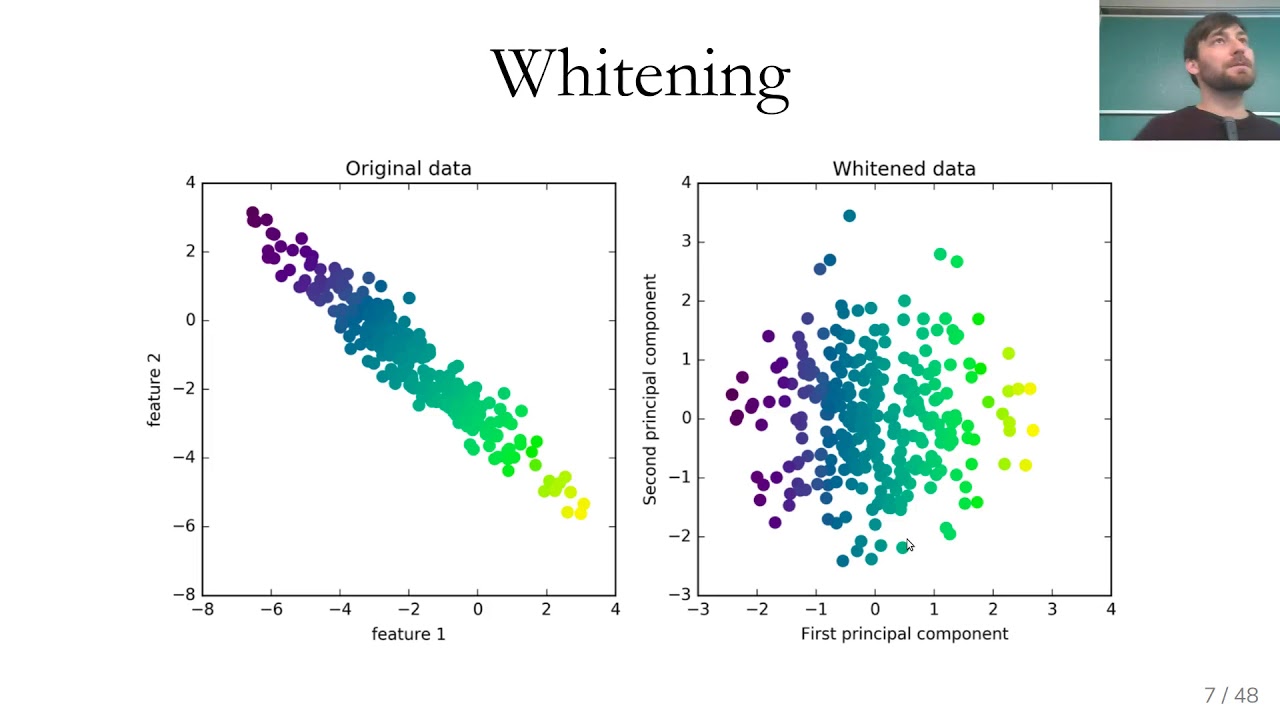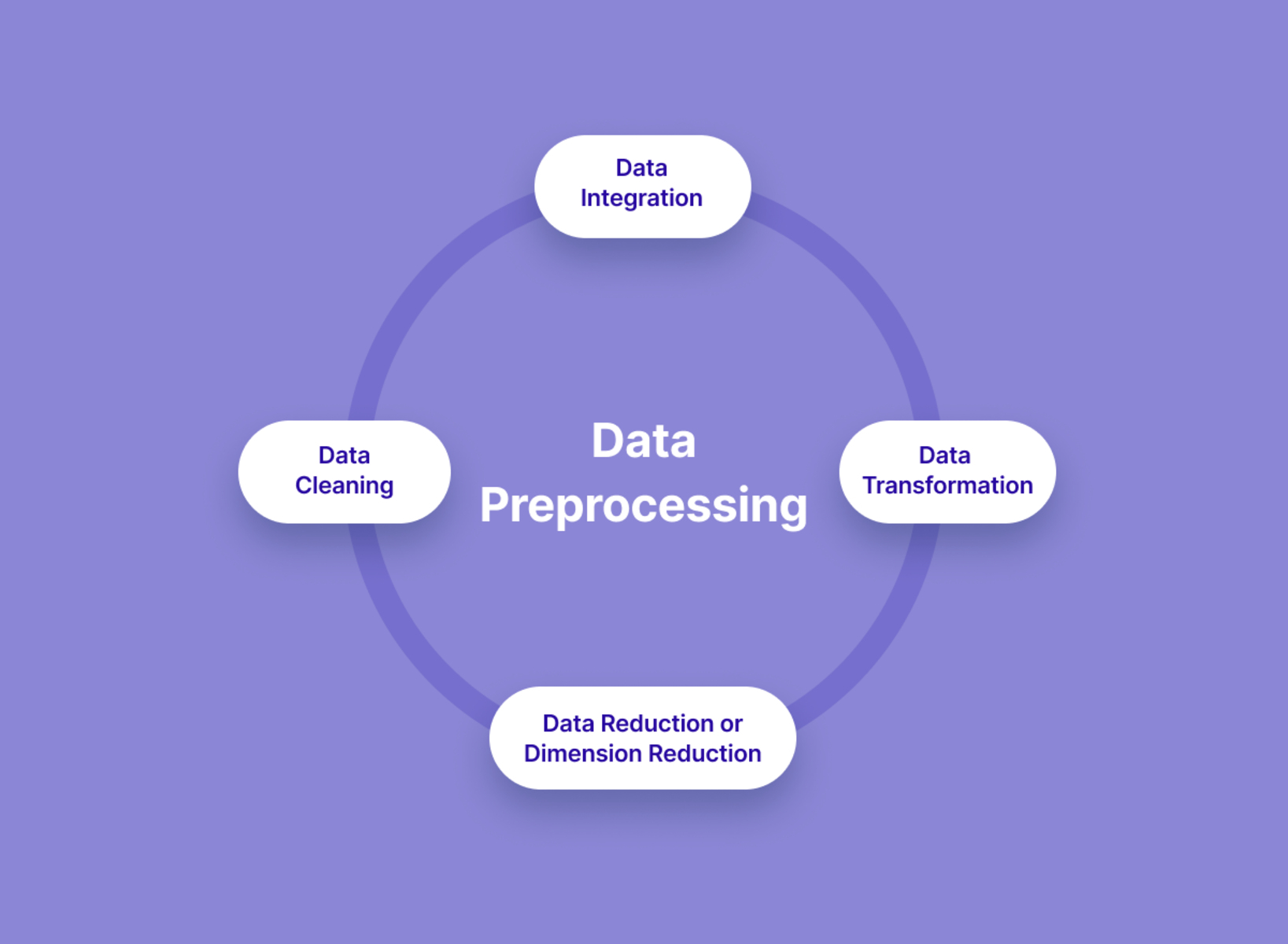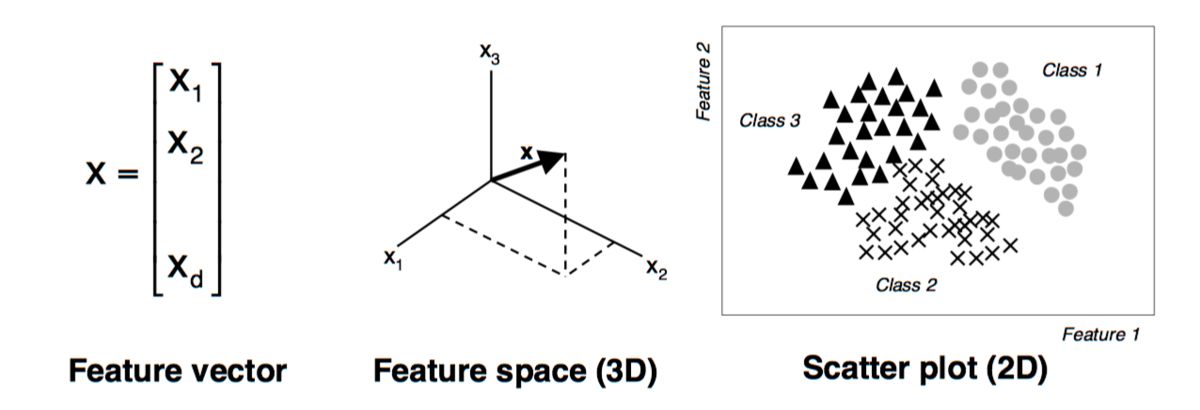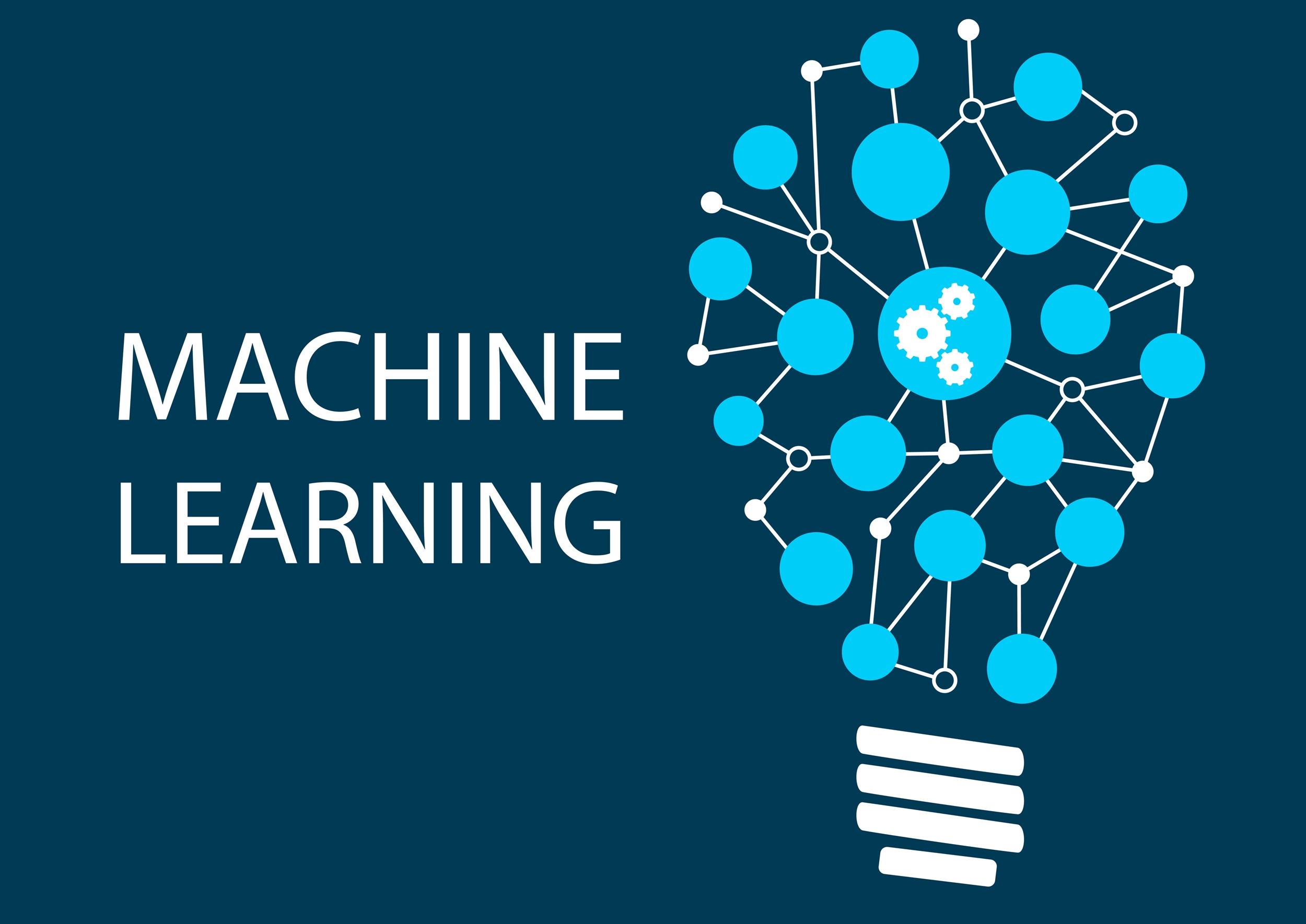Introduction
Welcome to the world of machine learning, where algorithms and models are designed to learn from data and make intelligent predictions or decisions. In this realm, one popular technique that has gained significant attention and acclaim is Latent Dirichlet Allocation, or LDA. LDA is a statistical model used for topic modeling, which helps uncover hidden patterns within a collection of documents or texts.
Imagine you have a large corpus of documents and you want to understand the underlying themes or topics present in that collection. LDA can assist in automatically identifying these latent topics and allocating words to those topics based on their statistical probabilities.
LDA has proven to be incredibly useful in various applications, including text mining, information retrieval, sentiment analysis, and recommender systems. By employing LDA, we can gain valuable insights from unstructured textual data and utilize them to make informed decisions and solve complex problems.
In this article, we will dive into the world of LDA, exploring how it works, the steps involved in its implementation, and the benefits and challenges of using LDA in machine learning. By the end, you will have a solid understanding of LDA and its applications, paving the way for you to incorporate this powerful technique into your own machine learning projects.
What is LDA?
Latent Dirichlet Allocation (LDA) is a generative statistical model that falls under the category of unsupervised machine learning algorithms. It was first introduced by David Blei, Andrew Ng, and Michael I. Jordan in 2003 as a way to discover the hidden topics within a collection of documents or texts. LDA assumes that each document contains a mixture of different topics and that each topic consists of a distribution of words.
Imagine you have a large dataset of documents, such as news articles or customer reviews, and you want to understand the underlying themes or topics present in the texts. LDA can help you automatically uncover these latent topics and determine the probability distribution of words within each topic.
In LDA, a document is represented as a mixture of topics, where each topic has its own probability distribution over words. For example, if we have a document about sports, the document may be a mixture of topics such as “football,” “basketball,” and “hockey.” Each word in the document is then assumed to be generated by one of these topics, where the probability of drawing a particular word is determined by the topic distribution.
The underlying assumption of LDA is that documents with similar topics will use similar words. By identifying the underlying topic structure of a collection of documents, LDA enables us to summarize the texts, classify new documents into topics, and discover relationships between topics.
LDA has become a fundamental tool in natural language processing and text mining, enabling researchers and data scientists to gain insights from large volumes of text data. By applying LDA, we can automatically extract meaningful topics from unstructured data, leading to more efficient information retrieval, content recommendation, and sentiment analysis.
How does LDA work?
Latent Dirichlet Allocation (LDA) is a probabilistic model that utilizes Bayesian inference to uncover the hidden topic structure within a collection of documents. LDA assumes that documents are generated through a two-step process: the generation of topics and the generation of words within each topic.
The algorithm follows these steps:
- Initialization: Determine the number of topics K that we want to extract from the documents and assign each word in the document a random topic.
- Topic Assignment: Iterate over each word in the document and update its topic assignment based on the current topic assignments of the other words.
- Topic Update: After assigning topics to each word in the document, update the topic probabilities based on the current assignments of all words in the document.
- Repeat Steps 2 and 3: Repeat the topic assignment and update steps for multiple iterations or until convergence is achieved.
During the topic assignment step, LDA calculates the probabilities of each topic for a given word and then assigns the word to a topic based on these probabilities. The word is more likely to be assigned to a topic if it frequently co-occurs with that topic in the document collection. This step helps in identifying the dominant topics in each document.
In the topic update step, LDA updates the topic probabilities based on the current assignments of all words in the document. It calculates the proportion of words assigned to each topic and adjusts the topic probabilities accordingly. This step helps in refining the topic distributions for the entire document collection.
By repeating the topic assignment and update steps, LDA iteratively improves the topic assignments and topic probabilities, leading to a more accurate representation of the underlying topics in the documents.
Once the LDA model is trained, we can extract the topic-word distributions and document-topic distributions. These distributions help in identifying the most probable words for each topic and the dominant topics present in each document.
LDA provides flexibility in determining the number of topics and can be customized to fit specific requirements. However, it is essential to strike a balance between having enough topics to capture the diversity of the document collection and not having too many topics that result in noise and overfitting.
Overall, LDA is a powerful technique for topic modeling that utilizes probabilistic modeling and Bayesian inference to uncover the hidden topic structure within a collection of documents. It has become an invaluable tool in various applications, including content recommendation, information retrieval, and sentiment analysis.
Steps involved in LDA
Latent Dirichlet Allocation (LDA) is a complex algorithm that involves several steps to uncover the latent topics within a collection of documents. Let’s dive into the key steps involved in implementing LDA:
- Step 1: Preprocessing the text data
- Step 2: Building the Document-Term Matrix
- Step 3: Selecting the number of topics
- Step 4: Training the LDA model
- Step 5: Evaluating the LDA model
- Step 6: Interpreting the results
The first step in LDA is to preprocess the text data. This may involve removing punctuation, converting all text to lowercase, removing stop words, and performing lemmatization or stemming. Preprocessing helps in reducing noise and standardizing the text data for further analysis.
Next, we construct a document-term matrix, which represents the frequency of each term (word) in each document. Each row of the matrix corresponds to a document, and each column corresponds to a unique term. This matrix serves as the input to the LDA algorithm and captures the statistical properties of the text data.
We need to determine the number of topics K that we want to extract from the document collection. This is a crucial step, as the number of topics impacts the quality and interpretability of the results. Selecting an appropriate number of topics requires domain knowledge and experimentation, as there is no universal rule.
Once we have preprocessed the text data and decided on the number of topics, we can train the LDA model. During the training process, LDA estimates the topic-word distributions and document-topic distributions iteratively. The algorithm calculates the posterior probabilities of topics and updates the distributions to find the most likely topic assignments for each word in the documents.
After training the LDA model, it is crucial to evaluate its performance. Evaluation can be done by assessing the coherence of the extracted topics, measuring the perplexity of the model on a held-out test set, or employing other topic coherence metrics. This step helps in assessing the quality of the LDA model and fine-tuning the parameters.
Finally, we interpret the results obtained from the LDA model. This involves examining the most probable words for each topic, identifying the dominant topics in each document, and exploring the relationships between topics. Visualization techniques, such as word clouds, topic distribution plots, or topic networks, can aid in understanding and communicating the extracted topics.
By following these steps, we can effectively implement LDA and gain valuable insights into the hidden topic structure within a collection of documents. The combination of preprocessing, model training, evaluation, and interpretation allows us to uncover meaningful patterns and make informed decisions based on the discovered topics.
Preprocessing text data for LDA
Before applying Latent Dirichlet Allocation (LDA) on text data, it is essential to preprocess the data to enhance the quality and efficiency of the topic modeling process. Preprocessing involves several steps that help standardize the text and remove irrelevant information. Let’s explore the key preprocessing steps for LDA:
- Lowercasing
- Tokenization
- Removing stop words
- Lemmatization or stemming
- Removing special characters and numbers
One of the initial steps in text preprocessing is converting all text to lowercase. This step ensures that words with the same spelling but different cases are treated as the same word. For example, “Apple” and “apple” should have the same representation in the LDA model.
Tokenization involves splitting the text into individual words or tokens. This step helps in breaking down the text into its fundamental units and facilitates further analysis. There are various tokenization techniques available, including using whitespace, punctuation, or advanced natural language processing libraries.
Stop words are common words that do not carry significant meaning and can appear frequently in text. Examples of stop words include “the,” “is,” and “and.” These words can hinder the extraction of meaningful topics in LDA. Therefore, it is common practice to remove stop words from the text before applying LDA. Libraries like NLTK provide pre-defined stop word lists, which can be customized based on the specific domain or analysis requirements.
Lemmatization and stemming are techniques used to reduce words to their base or root form. Lemmatization maps words to their dictionary form, known as the lemma. For example, the word “running” would be lemmatized to “run.” Stemming, on the other hand, removes suffixes to obtain the root word. For example, “running” would be stemmed to “run.” These techniques help in reducing word variations and consolidating words with the same meaning, improving the accuracy of the LDA model.
Special characters and numbers usually do not provide meaningful insights when performing topic modeling with LDA. Removing these elements can help reduce noise and ensure that the LDA model primarily focuses on relevant words. Techniques like regular expressions can be used to identify and remove special characters and numbers from the text.
By following these preprocessing steps, text data can be transformed into a clean and standardized format suitable for LDA. This enhances the quality of the topic modeling process, resulting in more accurate and interpretable topics.
Training an LDA Model
Once the text data is preprocessed, we can proceed to train a Latent Dirichlet Allocation (LDA) model. Training an LDA model involves estimating the topic-word distributions and document-topic distributions iteratively. Let’s explore the key steps in training an LDA model:
- Constructing the document-term matrix
- Setting the hyperparameters
- Training process
- Updating topic assignments
- Updating topic distributions
The first step in training an LDA model is to create a document-term matrix. This matrix represents the frequency of each term (word) in each document. Each row of the matrix corresponds to a document, and each column corresponds to a unique term. The document-term matrix captures the statistical properties of the text data, which are utilized in the LDA algorithm.
Before training the LDA model, we need to set the hyperparameters. These parameters control the behavior of the LDA algorithm and affect the topic distributions. The most important hyperparameter is the number of topics (K) that we want to extract from the document collection. Other hyperparameters include the Dirichlet priors that control the sparsity of the topic distribution in documents and word distribution in topics.
Once the hyperparameters are determined, we can start the training process. The LDA algorithm iteratively estimates the topic assignments of words in the documents and updates the topic-word and document-topic distributions. The training process continues until it reaches a convergence criterion, such as the maximum number of iterations or a certain level of change in the topic distribution.
During training, the LDA model updates the topic assignments of words in the documents. The topic assignment determines which topic a word belongs to. It is updated based on the current topic assignments of the other words in the document and the topic-word distribution. Words are more likely to be assigned to topics that are prevalent in the document and have high probabilities of generating the words.
After updating the topic assignments, the LDA model updates the topic distributions. It calculates the proportion of words assigned to each topic and adjusts the topic probabilities accordingly. This step helps refine the topic distributions for the entire document collection. The goal is to find the most likely topic assignments that generate the observed words in the documents.
Once the LDA model is trained, we can extract the topic-word distributions and document-topic distributions. These distributions provide insights into the most probable words for each topic and the dominant topics in each document. They help in interpreting and analyzing the results of the LDA model.
Training an LDA model requires careful parameter tuning and multiple iterations to achieve reliable results. It is important to understand the impact of hyperparameters and select appropriate values based on the specific application and dataset. Evaluating the performance of the LDA model and interpreting the extracted topics are essential steps to ensure the quality and usefulness of the trained model.
Evaluating an LDA Model
After training a Latent Dirichlet Allocation (LDA) model, it is crucial to evaluate its performance to ensure the quality and effectiveness of the extracted topics. Evaluating an LDA model involves assessing the coherence of the topics and measuring the overall performance of the model. Let’s explore some common evaluation techniques for an LDA model:
- Topic Coherence
- Perplexity
- Human Evaluation
- Visualization
Topic coherence measures the interpretability and coherence of the topics extracted by the LDA model. It calculates the semantic similarity between words within each topic based on a given corpus or external sources of knowledge. Higher coherence scores indicate more interpretable and meaningful topics.
Perplexity is a measure of how well the LDA model predicts the observed data. It assesses how well the model can estimate the probability distribution of words in the documents. Lower perplexity scores indicate higher predictive performance of the model on unseen data.
Another approach to evaluating an LDA model is through human evaluation. This involves having human experts or domain specialists assess the quality, relevance, and coherence of the extracted topics. Their subjective judgments provide valuable insights into the usefulness and interpretability of the topics.
Visualization techniques can also aid in evaluating an LDA model. Visualizations such as word clouds, topic distribution plots, or topic networks can help in understanding the relationships between topics, identifying dominant topics, and exploring the distribution of words within each topic. These visualizations allow for an intuitive assessment of the model’s performance and the coherence of the topics.
It is important to note that evaluating an LDA model is not a one-size-fits-all process. The choice of evaluation techniques may vary depending on the specific application and domain. Additionally, combining multiple evaluation methods can provide a more comprehensive assessment of the model.
It is also worth mentioning that evaluating an LDA model is an iterative process. It involves fine-tuning the model’s hyperparameters, such as the number of topics, and re-evaluating the topics to optimize the model’s performance. Continuous evaluation and refinement of the LDA model are essential for obtaining high-quality and meaningful topic representations.
By evaluating an LDA model, we gain insights into the coherence and quality of the extracted topics. This allows us to make informed decisions and interpretations based on the LDA results, leading to a better understanding of the underlying patterns and themes within the text data.
Advantages of LDA in Machine Learning
Latent Dirichlet Allocation (LDA) offers several advantages in the field of machine learning, particularly in the analysis of textual data. Let’s explore some of the key advantages of using LDA:
- Topic Extraction and Understanding
- Automatic Topic Modeling
- Flexibility in Number of Topics
- Discovering Latent Semantic Relationships
- Uncovering New Insights
LDA helps in extracting topics or themes from a collection of documents. By identifying the underlying topics, LDA enables us to gain a deeper understanding of the content and structure of the text data. This can be immensely valuable for tasks such as content recommendation, information retrieval, and content analysis.
LDA automates the process of topic extraction, eliminating the need for manual categorization or labeling of documents. It allows for unsupervised learning, where topics emerge naturally from the data without any predefined categories. This makes it a scalable and efficient approach for analyzing large volumes of textual data.
LDA allows for flexibility in determining the number of topics to extract from the data. This adaptability ensures that we can capture the complexity and diversity of the document collection without being limited to a fixed number of categories. With LDA, we can discover both broad and niche topics, providing a comprehensive representation of the data.
By uncovering the latent topics within the text data, LDA helps in discovering semantic relationships between words, documents, and topics. This enables us to explore the connections and associations between concepts and understand how they relate to each other. Discovering these hidden relationships can provide valuable insights in various applications, such as recommender systems or sentiment analysis.
LDA can reveal unexpected or unknown patterns and themes within a document collection. It can uncover hidden topics that may not be apparent from manual inspection or traditional analysis methods. By leveraging LDA, we can discover new insights and make more informed decisions based on the discovered topics and their relationships.
The advantages of LDA make it a powerful tool for extracting meaningful information from textual data in machine learning applications. From topic extraction to uncovering latent relationships, LDA empowers researchers and data scientists to gain valuable insights and make better use of their text data.
Challenges of using LDA in Machine Learning
Although Latent Dirichlet Allocation (LDA) is a powerful tool for topic modeling in machine learning, it is not without its challenges. Let’s explore some common challenges associated with using LDA:
- Determining the Number of Topics
- Interpretability of Topics
- Accuracy of Results
- Sensitivity to Hyperparameters
- Handling Large-scale Data
One of the main challenges in using LDA is determining the optimal number of topics to extract from the data. Selecting an appropriate number of topics requires domain knowledge and experimentation, as there is no universal rule. Choosing too few topics may result in oversimplification, while selecting too many topics can lead to noise and overfitting.
Although LDA extracts topics from the data, the interpretability of these topics can be a challenge. While the topics may have high probabilities for certain words, making sense of those words in the context of the topic can be difficult. Interpreting the topics correctly requires domain expertise and nuanced understanding of the data.
The accuracy of LDA results can vary depending on the quality and representativeness of the data. Noise, inconsistencies, or biases in the text data can impact the performance of the LDA model and lead to less accurate results. Preprocessing the data, removing outliers, and addressing data quality issues can help mitigate this challenge.
LDA requires the setting of various hyperparameters, such as the number of topics and the Dirichlet priors. The performance and results of LDA can be sensitive to these hyperparameter settings. Finding the optimal values for hyperparameters requires careful experimentation and tuning, which can be time-consuming and computationally expensive.
While LDA is effective for analyzing moderate-sized document collections, it can become challenging to use it with large-scale data. As the number of documents and vocabulary size increase, the computational resources required to train the LDA model also increase. Scaling LDA to handle big data may require distributed computing frameworks or sampling techniques.
Awareness of these challenges enables researchers and practitioners to make informed decisions when applying LDA in machine learning tasks. By addressing these challenges and understanding their impact, we can strive to improve the quality and efficacy of LDA-based topic modeling approaches.
Applications of LDA in Machine Learning
Latent Dirichlet Allocation (LDA) has found numerous applications in the field of machine learning, specifically in the analysis and understanding of textual data. Let’s explore some of the key applications of LDA:
- Topic Modeling
- Sentiment Analysis and Opinion Mining
- Content Recommendation
- Information Retrieval
- Text Summarization
- Market Research and Customer Segmentation
LDA is primarily used for topic modeling, which involves extracting latent topics from a collection of documents. This application finds its utility in various domains, including content recommendation systems, information retrieval, and content analysis. LDA enables automated topic extraction, uncovering the hidden themes within large volumes of text data.
LDA can be applied in sentiment analysis and opinion mining tasks. By identifying the topics present in a set of documents or tweets, LDA helps in understanding the sentiment distribution across different topics. This assists in analyzing public opinion, product reviews, social media sentiment, and other types of qualitative data.
LDA can be used to power content recommendation systems. By extracting topics from user behavior, preferences, or textual data, LDA can generate personalized recommendations. The identified topics serve as a basis for understanding user interests and matching them with relevant content, such as articles, products, or news items.
When building search engines or information retrieval systems, LDA can enhance the search experience by incorporating topic information. By associating documents with relevant topics, LDA helps in ranking and retrieving documents based on topic similarity, improving the accuracy and relevance of search results.
LDA can assist in text summarization, where the objective is to generate concise summaries of long documents. By identifying the most representative topics within a document, LDA can aid in selecting and assembling the most important information into summaries, enabling faster comprehension and information extraction.
LDA has applications in market research and customer segmentation. By analyzing customer feedback, surveys, or social media conversations, LDA can help identify the latent needs, preferences, and behaviors of customer groups. This information is invaluable for targeted marketing, campaign customization, and business strategy development.
These are just a few examples of how LDA can be applied in machine learning tasks. With its ability to uncover hidden patterns and themes in textual data, LDA empowers researchers and data scientists to gain meaningful insights from unstructured text, leading to improved decision-making and problem-solving in a wide range of applications.
Conclusion
Latent Dirichlet Allocation (LDA) is a powerful technique in the field of machine learning, offering a valuable approach for topic modeling and analysis of textual data. It has proven to be effective in uncovering hidden patterns and themes within large collections of documents. By applying LDA, we can automatically extract meaningful topics, understand their relationships, and gain insights into unstructured text data.
In this article, we explored the key aspects of LDA, including its definition, working mechanism, and steps involved in its implementation. We discussed the importance of preprocessing text data to ensure its suitability for LDA, and we highlighted the significance of training and evaluating the LDA model. We also explored the advantages, challenges, and various applications of LDA in machine learning tasks.
Despite its advantages, it is important to note that LDA is not a one-size-fits-all solution. Determining the optimal number of topics, ensuring the interpretability of the topics, and addressing challenges such as hyperparameter tuning and scalability are essential for successful LDA implementation.
Overall, LDA has revolutionized the field of text analysis, enabling researchers and data scientists to unlock valuable insights from vast amounts of unstructured textual data. With its broad applications in topic modeling, sentiment analysis, content recommendation, and more, LDA continues to play a crucial role in extracting knowledge and understanding from textual information.
As machine learning techniques continue to evolve, LDA remains a powerful tool for text analysis, providing a framework to uncover the latent structure of textual data. Embracing the capabilities of LDA and leveraging its insights can significantly enhance decision-making, content understanding, and information retrieval in various domains.

























